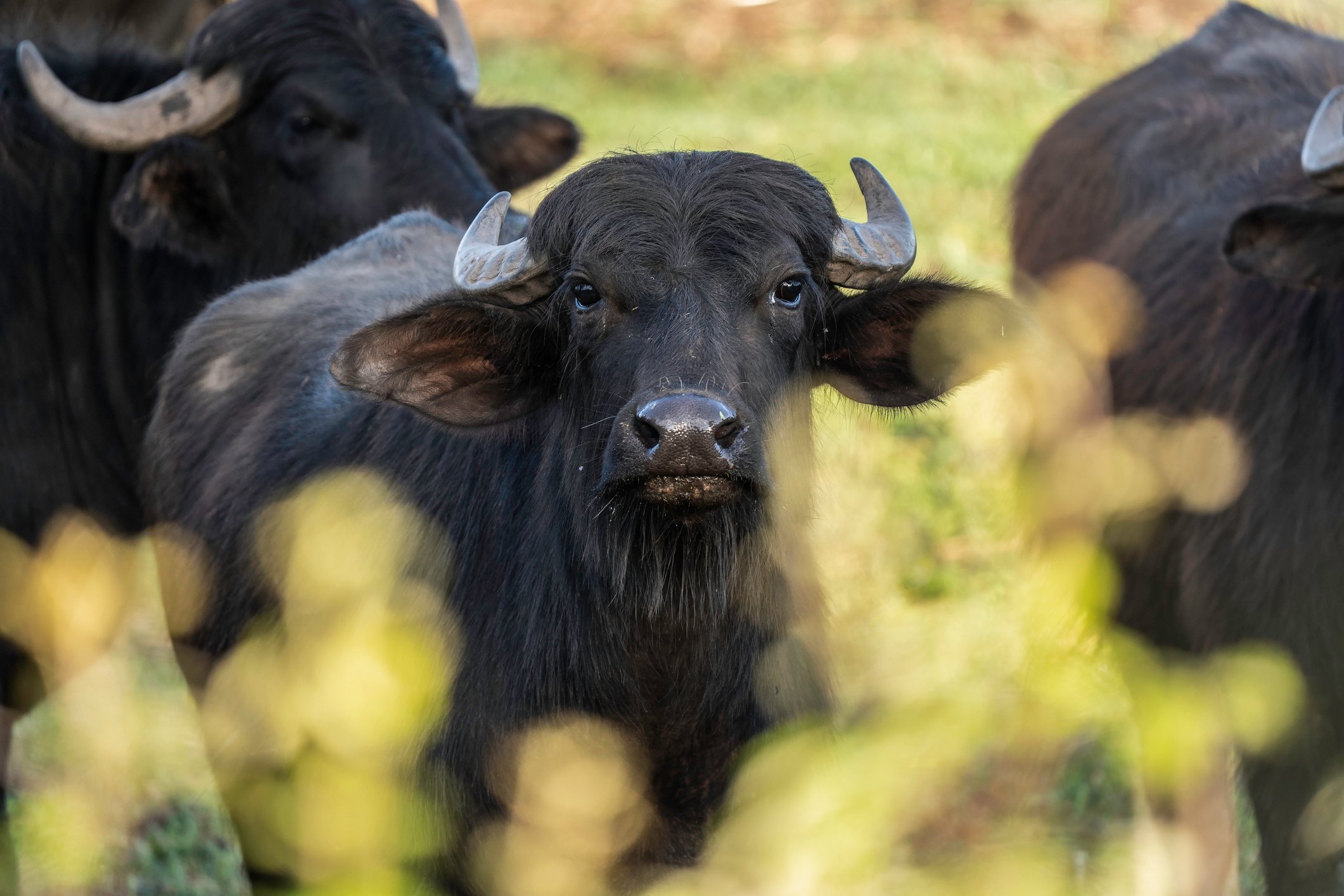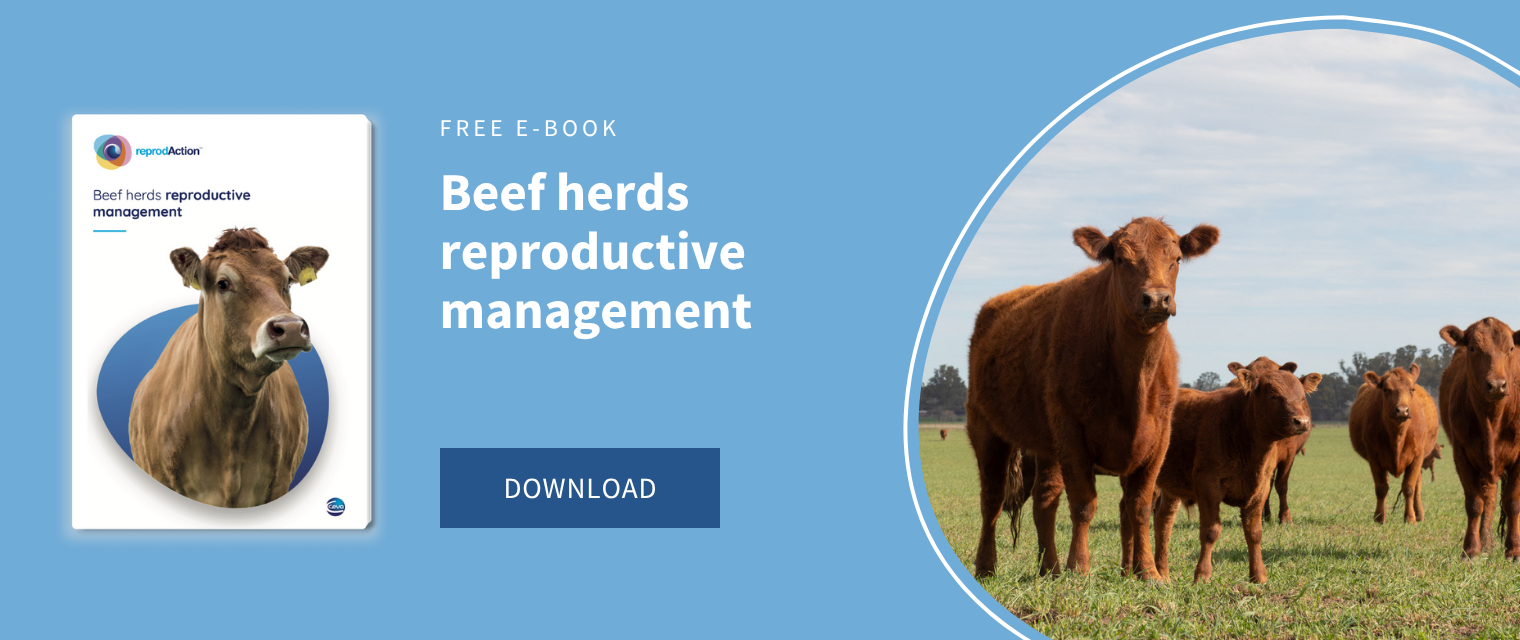Introduction
Water buffaloes (Bubalus bubalis) are vital to livestock economies in Asia, South America, and parts of Europe, contributing significantly to milk and meat production, as well as providing draft power. Although buffalo are adaptable to severe environments, their reproductive efficiency is a significant challenge in production systems.
There is renewed interest in the potential of reproductive technology as the buffalo beef and dairy industries seek to identify and multiply animals that satisfy consumer demand for efficient utilization of natural resources, with minimal environmental impact and high product quality.
Over the past thirty years, synchronization protocols based on evidence for controlling follicular dynamics have been developed to enable fixed-time artificial insemination (FTAI), fixed-time embryo transfer (FTET), and embryo technologies suitable for buffalo biology. Today, these reproductive programs are highly efficient and easy to use in farm management. These biotechnologies, when applied to buffalo herds, enhance reproductive efficiency and genetic gain, thereby increasing meat and milk productivity on farms.
This article consolidates scientific contributions into practical and effective reproductive programs for buffalo herds. Additionally, this document highlights the primary reproductive challenges and outlines management strategies designed to improve fertility and productivity.
Prefer to listen to this article? Click the play button below and enjoy our podcast!
1) What biological factors influence reproductive management in water buffaloes?
Buffaloes display 2–3 follicular waves per cycle, with smaller dominant follicles and a corpus luteum (CL) than in cattle and exhibit strong photoperiod influences on cyclicity and poor estrous expression, resulting in marked “breeding” (shorter daylength) and “non-breeding” (longer daylength) seasons. Scientific studies have mapped the follicular dynamics and cyclic patterns of buffalo, providing essential knowledge for determining the timing of pharmacologic control and optimal insemination windows.
2) How are fixed-time AI (FTAI) protocols applied and seasonally adapted in water buffaloes?
The treatment with gonadotropin-releasing hormone (GnRH) in combination with prostaglandin F₂α (PGF₂α) forms the basis of Ovsynch-type synchronization protocols, originally developed for cattle and later adapted to buffaloes. The rationale is to control both the emergence of a new follicular wave and the timing of luteolysis, thereby concentrating ovulation within a predictable window suitable for fixed-time artificial insemination.
Progesterone and equine chorionic gonadotropin (eCG) are also used for the synchronization of ovulation in buffaloes, mainly during the non-breeding season. Dairy buffalo treated with progesterone devices (P4) and eCG for FTAI yielded higher pregnancy rates and mitigated seasonal negative impact on reproductive efficiency. eCG consistently improved the size of the ovulatory follicle and the luteal function during the following diestrus phase, increasing the fertility during the non-breeding season.
In countries where estradiol is available, estradiol benzoate (EB) or estradiol cypionate (EC) are used to trigger ovulation. Comparative trials indicate that estradiol can synchronize ovulation as effectively as GnRH during both breeding and non-breeding seasons when used within a P4-based protocol, enabling flexibility in drug choice and supply chain management.
3) Herd-level execution for FTAI with re-synchronization
Water buffaloes have a longer gestation period than cattle (306 days vs. 280 days), which necessitates a shorter service period (the interval from calving to conception) for buffaloes (60 days) compared to cattle (85 days) to achieve one calf per year (12-month intercalving interval). Consequently, synchronization programs for FTAI can commence early in buffalo (around 30 days postpartum), with FTAI occurring around 40 days postpartum.
Furthermore, strategic use of re-synchronization (restarting a synchronization protocol around 28–32 days post-FTAI in non-pregnant females) can compress breeding seasons, improve AI cumulative pregnancy rates, and avoid delays in the days between calving and conception.
To implement effective resynchronization programs, it is necessary to diagnose the non-pregnant buffaloes as quickly as possible. Ultrasound pregnancy diagnosis is highly effective when used in buffalo cows and heifers from 28 days of gestation onward.
4) How can embryo technologies accelerate genetic gain in water buffaloes?
Superstimulation for in vivo embryo production and ovum pick-up (OPU) for in vitro embryo production (IVEP) can rapidly enhance genetics in buffaloes through both superior female and male lineages. In vivo-derived (IVD) embryo production has been shown to be feasible in buffalo; however, low efficiency and limited commercial application have been reported. Currently, a series of recent studies has demonstrated the potential of in vitro embryo production (IVP) in buffaloes.
Nevertheless, several factors appear to be critical to OPU/IVEP efficiency, including antral follicle population, follicular diameter, environment, farm, and category of donor.
Superstimulation with FSH before ovum pick-up (OPU) increases the proportion of medium/large follicles, enhances oocyte competence, and raises blastocyst yields across parity classes in buffalo donors, allowing year-round embryo production despite seasonal constraints.
Effective logistics, including recipient synchronization and handling of embryos at various stages and qualities, are essential for the success of the ET program. Field analyses in buffalo recipients have identified key factors on the recipient side that affect outcomes, including a luteal size of 14.5 mm or greater at the time of transfer.
The favorable breeding season, which can reduce pregnancy loss and increase calving rates, is also a notable factor. Protocols that utilize P4+eCG for fixed-time embryo transfer (FTET) generally perform better than Ovsynch-based recipient preparation, particularly under anestrous conditions.
5) Putting it together: a practical blueprint
Currently, there is an established know-how to place efficient reproductive programs for the use of assisted reproductive technology (ART) in buffalo. The control of follicular wave emergence and ovulation at predetermined times, without the need for estrus detection, has facilitated AI programs and donor and recipient management. Synchronization protocols are designed to control both luteal and follicular function and permit fixed-time AI with high pregnancy rates during the breeding (autumn–winter) and nonbreeding (spring and summer) seasons.
The OPU/IVEP is showing promising results and has become an alternative to superovulation for in vivo embryo production in buffalo. The use of this biotechnology enables the rapid enhancement of genetics through both female and male lineages. Therefore, the ARTs have been established and can collaborate for genetic improvement and reproductive efficiency, increasing the meat and milk production of the buffalo herds.
Take-home messages
- Efficient reproductive management in water buffaloes relies on understanding their biology and using fixed-time artificial insemination (FTAI) to control ovulation and improve fertility year-round. Hormonal protocols and resynchronization shorten breeding seasons and increase pregnancy rates.
- Embryo technologies like ovum pick-up and in vitro embryo production accelerate genetic gain, boosting milk and meat productivity while supporting more sustainable buffalo farming.
References
Baruselli PS, Mucciolo RG, Visintin JA, et al. Ovarian follicular dynamics during the estrous cycle in buffalo (Bubalus bubalis). Theriogenology. 1997;47:1531–1547.
Baruselli PS, Soares JG, Gimenes LU, et al. Control of buffalo follicular dynamics for artificial insemination, superovulation, and in vitro embryo production. Buffalo Bulletin. 2013;32:160–167.
Carvalho NAT, Soares JG, Baruselli PS, et al. Equine chorionic gonadotrophin improves the efficacy of a synchronization protocol for FTAI in buffalo during the non-breeding season. Theriogenology. 2013;79:423–428.
Carvalho NAT, Soares JG, Porto Filho R, Gimenes LU, Baruselli PS. Ovulation synchronization with estradiol benzoate or GnRH in buffalo during the non-breeding season. Theriogenology. 2017;89:284–293.
Monteiro BM, Baruselli PS, et al. How season affects reproductive performance in dairy buffalo when using P4/E2/eCG-based FTAI. Theriogenology. 2018;114:86–91.
Baruselli PS, et al. Assisted reproductive technologies (ART) in water buffaloes. Animal Reproduction. 2018;15(Suppl 1):983–993.
Baruselli PS, Carvalho JGS, Elliff FM, Silva JCBD, Chello D, Carvalho NAT. Embryo transfer in buffalo (Bubalus bubalis). Theriogenology. 2020;150:221–228.
Saliba WP, Gimenes LU, Baruselli PS, et al. Which factors affect pregnancy and loss in buffalo recipients of IVP embryos? Front Vet Sci. 2020;7:577775.
Gimenes LU, Sá Filho MF, Carvalho NAT, Baruselli PS, et al. OPU interval relative to wave emergence does not impair IVP (including buffalo). Theriogenology. 2015;84:110–117.
About the author
Pietro S. Baruselli (Professor at the Faculty of Veterinary Medicine and Animal Science)
Pietro Baruselli is a Professor of Animal Reproduction at the University of São Paulo in Brazil. He holds an undergraduate degree in Veterinary Medicine (1985), a Master's degree (1992), and a PhD in Animal Reproduction (1997) from São Paulo University. He was president of the Brazilian Embryo Technology Society (SBTE/2012-2014), a member of the Executive Committee of the International Congress of Animal Reproduction (ICAR/2012-2022), and chair of the 45th Annual Conference of the International Embryo Technology Society (IETS) in New Orleans, USA (2019). Professor Baruselli´s research and teaching focus on controlling follicular dynamics and ovulation for fixed time artificial insemination and embryo transfer in cattle (Bos indicus and Bos taurus) and buffalo (Bubalus bubalis). He has authored over 300 scientific publications and presented more than 700 abstracts at scientific congresses on a wide range of topics, including the physiology of reproduction, ovulation synchronization, reproductive biotechnology, and reproductive management. He has supervised 70 completed Master's and PhD candidatures and has extensive international experience.
Explore author’s articlesAbout the author
Federico Randi is Global Technical Manager for Ruminants at Ceva Animal Health, specializing in cattle reproduction. With a Doctor of Veterinary Medicine degree “cum laude” from the University of Bologna, he focused his career on improving efficiency and sustainability of farmed animals. Randi conducts research on ruminants fertility, using technologies like Timed AI, embryo transfer, and recombinant technologies. His extensive experience includes collaborative projects with over 20 research institutions globally. He earned his PhD at University College Dublin, concentrating on fixed-time artificial insemination and embryonic maternal communication in cattle. Currently, he serves as a Board Member in the Scientific Commission of Animal Physiology for the European Federation of Animal Science (EAAP) as an Industry Representative.




Leave your comments here